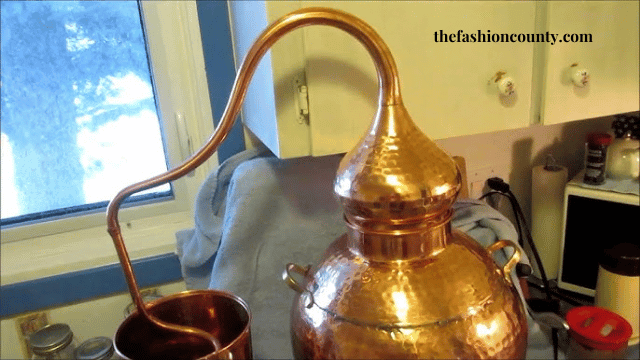Top Considerations for Selecting a Moonshine Still

Selecting the finest Moonshine still may be difficult, particularly for inexperienced users. There are so many different styles, sizes, and materials to select from—how in the world are you expected to choose the perfect one? Do not be afraid, fellow smugglers! This article will walk you through every critical component in this excellent tutorial. So raise your glass, sip, and get started!
Budget
Establish the budget that you are willing to adhere to. Moonlight Moonlight still prices vary widely, ranging from quite affordable ($100–$600) to outrageously expensive ($1,000 and above). Knowing how much you’re prepared to spend can streamline your buying process more than a premium whiskey, regardless of your style.
Size
When determining the right size for moonshine stills, you should think about how much Moonshine you want to make in each batch. As a general rule of thumb, Moonshine may be produced in bigger stills in a single run.
- The initial alcohol percentage of your wash is one of the many variables determining the precise output of Moonshine. “Alcohol by volume” (ABV), or the percentage of alcohol in the wash, is the standard expression for the initial alcohol concentration.
- Moonshine production might vary depending on the kind of still used. For instance, yield from a pot still is often lower than that of a column still. About 8 to 10 gallons of Moonshine may be produced by a pot still for every 5 gallons of mash, and 12 to 14 gallons can be made by a column still for every 5 gallons of wash.
- It is crucial to remember that these numbers are estimates that may change based on several variables, including the still’s layout, the caliber of the materials, and the distillation procedure.
Ease Of Use
Seek for a simple still to set up, run, and maintain. Clear instructions and user-friendly features are standard in beginner-friendly stills. In terms of use and functionality, a few varieties of moonshine stills are typically regarded as user-friendly:
- Electric Still: Most people agree that electric stills are the simplest to operate. These stills usually do not require external heat sources or continuous monitoring since they have built-in temperature control systems and heating components. Since electric stills provide you exact control over the distillation process, they are often safer and more convenient for novices.
- Counterflow Condenser Still: The design of counterflow condenser stills makes the distillation process easier. The vertical alignment of the condenser and column in this kind of still facilitates more effective vapor flow, which leads to a more efficient distillation process. Thanks to this design, the counterflow condenser stills are more straightforward to operate and regulate in terms of temperature.
- All-in-One Still Kits: All-in-one still kits are pre-assembled sets with the still, condenser, thermometer, and other required accessories, together with all the other vital parts needed for distillation. These kits are handy and easy for novices since they frequently include comprehensive instructions and step-by-step coaching.
Material
Stainless steel or copper are frequently used to make moonshine stills. A few essential distinctions exist between moonshine stills made of stainless steel and copper.
- Heat Conductivity: Because of copper’s exceptional heat conductivity, heat can be transferred quickly and efficiently throughout the distillation process. In contrast, copper has better heat transfer properties than stainless steel. Cooling water or heat input adjustments may still take longer to manifest themselves on stainless steel.
- Reactivity with Sulfides: The capacity of copper stills to react with sulfides found in fermentation fumes is one of their main advantages. These sulfides can cause unpleasant flavors and hangovers if they remain in the final distillate. Copper can help remove them. Stainless steel is not reactive to sulfides in the same way.
- Durability and Maintenance: Stills of stainless steel are often more robust than copper ones. Stainless steel is less likely to break, is simple to clean, and is corrosion-resistant. Even though they are elegant and classic, copper needs extra upkeep to avoid rust and tarnish. Copper has to be cleaned and polished frequently to keep its glossy appearance.
- Cost: Copper stills are frequently more expensive than stainless steel stills. Stainless steel stills might be more affordable for novices on a tight budget. On the other hand, copper stills are said to be of superior quality and allow distillers more control over the distillation process, which might improve the finished product’s flavor profile.
When selecting a still, you need to use caution. Consider your spending limit, the still’s dimensions, ease of use, and materials. Making an educated choice will be easy if you learn the fundamentals of moonshine stills and consider all your possibilities.
To be an absolute pro, conduct thorough due diligence and select a provider prioritizing dependability and quality. Recall that you are investing in an experience rather than merely purchasing a thing. A common bond, a sense of unity, and an incredible experience. So, go forth, make your selections, and get ready to create some truly unforgettable experiences.




